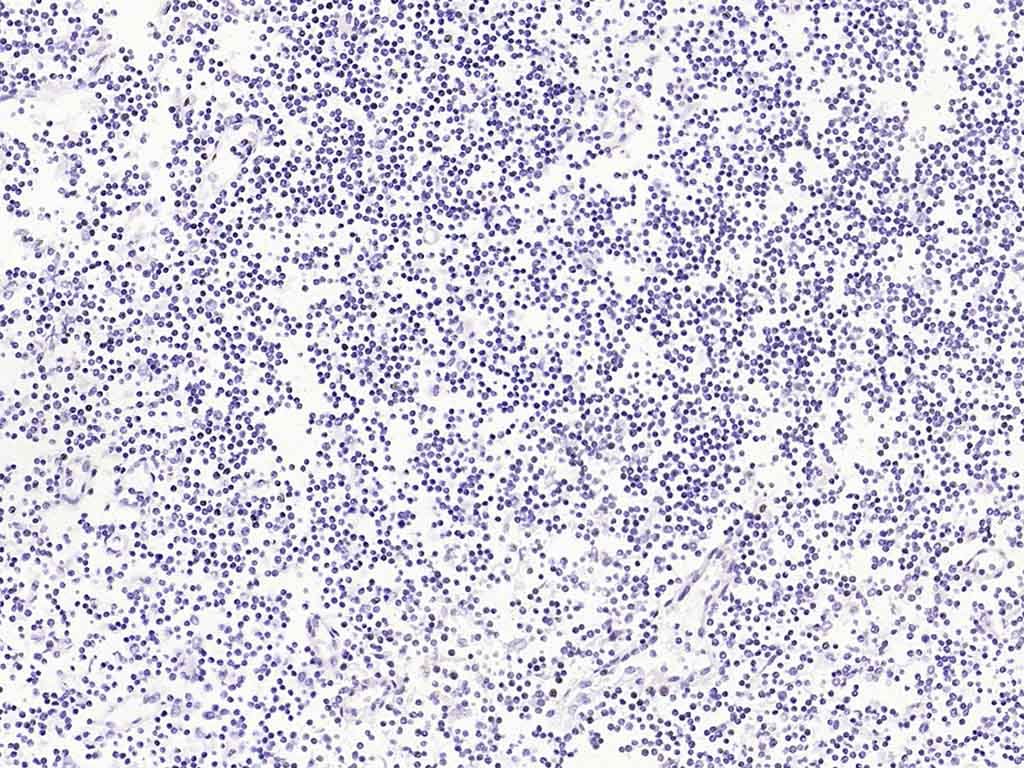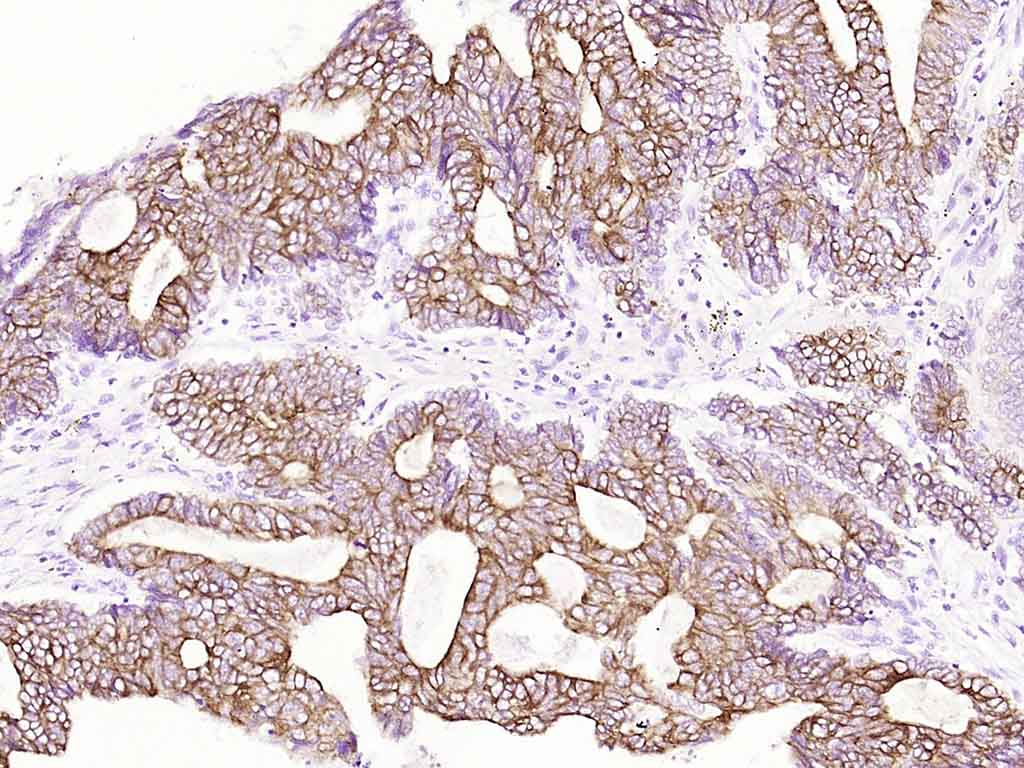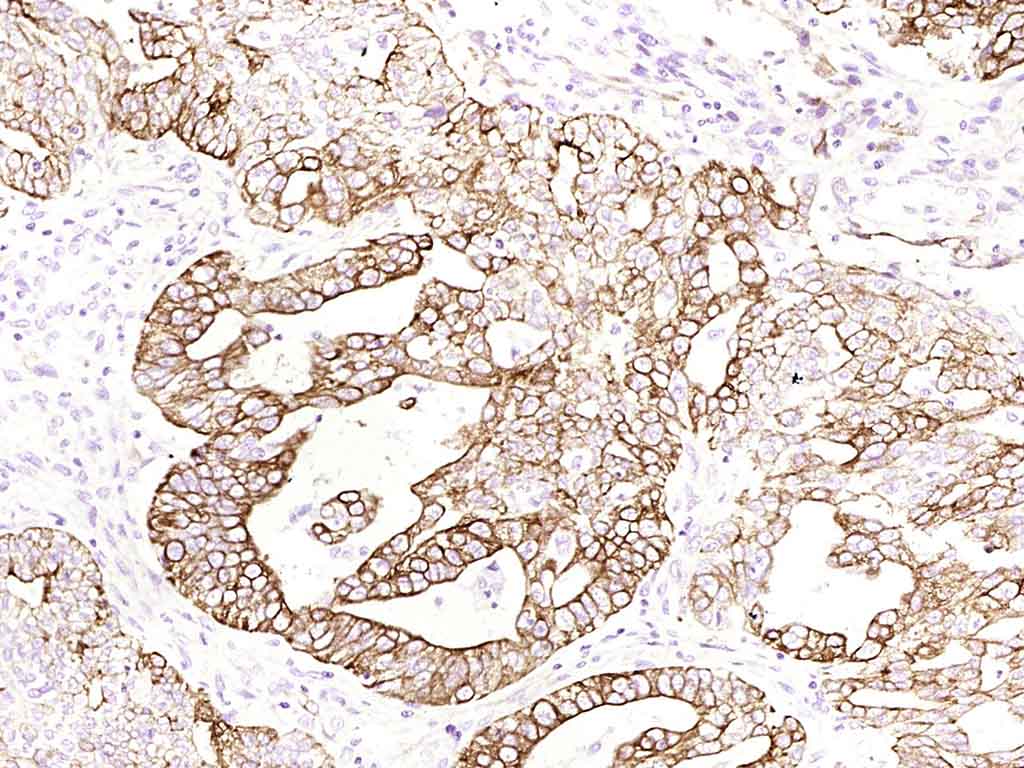
Mouse Anti-Cytokeratin 8 (Ready to use)antibody (BH0008)
card2; Cardiac autoantigen 2 120kD; CK 8; CK8; CK-8; ck8; Cyk 8; cyk8; CYKER; Cytokeratin endo A; Cytokeratin-8; Cytokeratin8; DreK8; EndoA; k0; CYK8; k2c8; K2C8_HUMAN; k8; Keratin 8; Keratin type ii cytoskeletal 8; Keratin, type II cytoskeletal 8; Kerati
View History [Clear]
Details
Product Name Cytokeratin 8(Ready to use) Chinese Name 人细胞角蛋白8单克隆抗体(工作液) Alias card2; Cardiac autoantigen 2 120kD; CK 8; CK8; CK-8; ck8; Cyk 8; cyk8; CYKER; Cytokeratin endo A; Cytokeratin-8; Cytokeratin8; DreK8; EndoA; k0; CYK8; k2c8; K2C8_HUMAN; k8; Keratin 8; Keratin type ii cytoskeletal 8; Keratin, type II cytoskeletal 8; Keratin-8; Keratin8; KO; Krt 2.8; Krt 8; krt8; KRT-8; MGC118110; MGC174782; MGC53564; MGC85764; sb:cb186; Type-II keratin Kb8. Research Area Tumour Cell biology Signal transduction Immunogen Species Mouse Clonality Monoclonal Clone NO. 10A8 React Species (predicted: Human, ) Applications IHC-P= IHC-F= (Paraffin sections need antigen repair)
not yet tested in other applications.
optimal dilutions/concentrations should be determined by the end user.Theoretical molecular weight 53kDa Cellular localization cytoplasmic The cell membrane Form Liquid immunogen KLH conjugated synthetic peptide derived from human Cytokeratin 8 Lsotype IgG Purification affinity purified by Protein A Buffer Solution 0.01M PBS(pH7.4) with 1% BSA and 0.1% Proclin300 Storage Store at 2-8 °C for one year. Avoid repeated freeze/thaw cycles. Attention This product as supplied is intended for research use only, not for use in human, therapeutic or diagnostic applications. PubMed PubMed Product Detail Keratin, type II cytoskeletal 8 also known as cytokeratin-8 (CK-8) or keratin-8 (K8) is a keratin protein that is encoded in humans by the KRT8 gene. It is often paired with keratin 18.
Antibodies to CK8 can be used to differentiate lobular carcinoma of the breast from ductal carcinoma of the breast. CAM 5.2, an antibody that reacts with an epitope found on both CK8 and CK18, is used in immunohistochemistry to demonstrate certain forms of cancer. In normal tissue, it reacts mainly with secretory epithelia, but not with squamous epithelium, such as that found in the skin, cervix, and esophagus. However, it also reacts with a range of malignant cells, including those derived from secretory epithelia, but also some squamous carcinomata, such as spindle cell carcinoma. It is considered useful in identifying microscopic metastases of breast carcinoma in lymph nodes, and in distinguishing Paget's disease from malignant melanoma. It also reacts with neuroendocrine tumors.
Keratin 8 is often used together with keratin 18 and keratin 19 to differentiate cells of epithelial origin from hematopoietic cells in tests that enumerate circulating tumor cells in blood.
Function:
Together with KRT19, helps to link the contractile apparatus to dystrophin at the costameres of striated muscle.
Subunit:
Heterotetramer of two type I and two type II keratins. KRT8 associates with KRT18. Associates with KRT20. Interacts with HCV core protein and PNN. When associated with KRT19, interacts with DMD. Interacts with TCHP. Interacts with APEX1.
Subcellular Location:
Cytoplasm. Nucleus, nucleoplasm. Nucleus matrix.
Tissue Specificity:
Observed in muscle fibers accumulating in the costameres of myoplasm at the sarcolemma membrane in structures that contain dystrophin and spectrin. Expressed in gingival mucosa and hard palate of the oral cavity.
Post-translational modifications:
Phosphorylation on serine residues is enhanced during EGF stimulation and mitosis. Ser-74 phosphorylation plays an important role in keratin filament reorganization.
O-glycosylated. O-GlcNAcylation at multiple sites increases solubility, and decreases stability by inducing proteasomal degradation.
O-glycosylated (O-GlcNAcylated), in a cell cycle-dependent manner.
DISEASE:
Defects in KRT8 are a cause of cirrhosis (CIRRH) [MIM:215600].
Similarity:
Belongs to the intermediate filament family.
SWISS:
P05787
Gene ID:
3856
Database links:Entrez Gene: 3856 Human
Omim: 148060 Human
SwissProt: P05787 Human
Unigene: 533782 Human
Unigene: 708445 Human
Product Picture
Partial purchase records(bought amounts latest0)
No one bought this product
User Comment(Total0User Comment Num)
- No comment





 +86 571 56623320
+86 571 56623320




